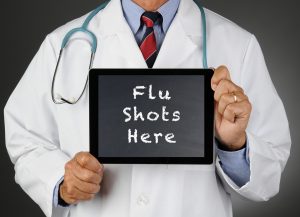
Pregnant women, babies as young as six months old, the immuno-compromised, and the elderly are all being told they need an annual flu shot.
This has not always been the case. Before 2000, only the elderly were advised to receive these inoculations. And the elderly didn’t actually benefit. Researchers report that the increase in elderly influenza inoculation coverage in the U.S. after 1980 wasn’t actually accompanied by reduction in influenza-related mortality. (Read findings here.)
Let’s take a deeper look at effectiveness and safety issues, along with a natural option.
Effectiveness?
The CDC’s committee that advises on immunization practices announced nasal spray flu inoculations should not be used in the 2016-2017 flu season because, “no protective benefit could be measured” from taking them.”
A study in the American Journal of Perinatology found that women who received flu inoculations during pregnancy had the same risk for influenza-like illness as uninoculated women. The same was true for their infants.
What About Safety?
The safety of flu shots in pregnant populations has never been adequately tested. For example:
Questionable ingredients
Many inoculations still contain thimerosal, despite claims that it’s been removed. According to the CDC, 48 million flu inoculations now available contain mega-doses of thimerosal. The material safety data sheet (MSDS) for thimerosal warns that it may cause adverse reproductive effects and birth defects in humans.
Infection risk
A peer-reviewed study published in Clinical Infectious Diseases (March 2016) found people inoculated against the flu three years in a row were actually at higher risk of being infected with the flu.
Adverse reactions
In 2014, $4.9 million was paid out to individuals with adverse flu shot reactions. By 2015 they paid out $61 million, as reflected in this report from the U.S. court of Federal Claims.

Is There an Option?
Many pregnant women, hospital workers, doctors and nurses are asking for homeopathic influenzinum for natural immune boosting during flu season. Naturally sourced, influenzinum causes zero injuries. It’s safe for infants, the elderly, and pregnant women.
During the 1918 Spanish flu epidemic, homeopathy shone brightly for its success. Those treated with conventional medicine at that time had a 28% mortality rate. The mortality rate for those treated with homeopathy was a mere 0.8%.
It’s important to understand more about influenza itself in order to make informed choices for yourself and your family.
Interested in learning more about how to address the flu and flu-like symptoms homeopathically? Cilla’s class Nine Remedies for the Flu is an excellent resources for families looking for alternatives to the flu shot.
Check out the Influenzinum CV30 survey results here.
Download our free HP Resource Sheet.
Learn More about Immunity
Ready to learn more about how you can cultivate real immunity for yourself and your family? Watch our Real Immunity documentary series.
